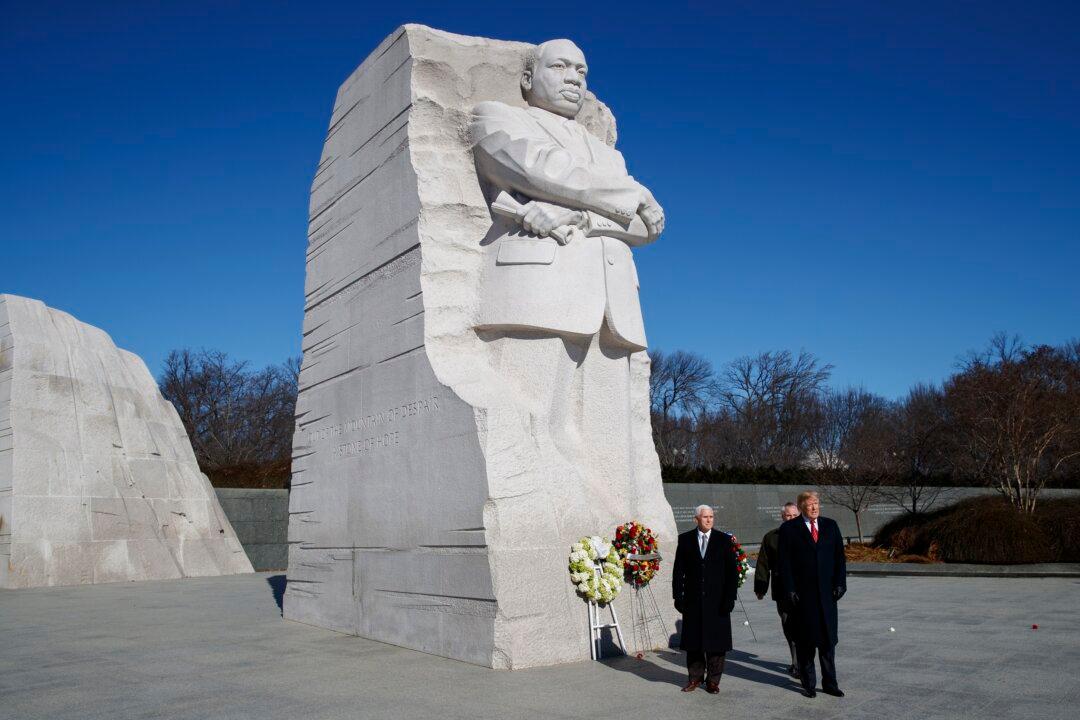President Donald Trump and Vice President Mike Pence made a surprise visit to the Martin Luther King Jr. Memorial in Washington on Jan. 21.
The visit came during the federal holiday in honor of King, the famed civil rights activist.


President Donald Trump and Vice President Mike Pence made a surprise visit to the Martin Luther King Jr. Memorial in Washington on Jan. 21.
The visit came during the federal holiday in honor of King, the famed civil rights activist.